It was late. The two of us were cradling our drinks on the verandah of Shane Bartlett’s camp. We were rehashing the day’s events and discussing potential projects, but mostly discussing the principles under which Shane and Allan Savory, the prophet, visionary and former owner of the surrounding lands, are managing this farm near Victoria Falls, in Zimbabwe.
Suddenly, something unusual in the pitch-black African night. A floodlight was scanning the bush far away towards the southeast, obviously looking for animals. “Almost certainly a poacher,” Shane said. Someone had come to hunt the rich lands of this strange cattle ranch teeming with elephants, buffaloes, kudu, giraffes, zebras, warthogs, impalas, lions, leopards and more.
Shane jumped up. “Do you want to come?” “How dangerous could it be?” “Don’t know. We rarely get poachers here. Probably not much.” “Ok, I’m on”. We grabbed the ammo belt, the radio and a twelve-bore shotgun. We had a range of shells – a variety of birdshot and some bigger buckshot, too. Something for almost anything. Almost anything, that is, except for the big really big stuff: the buffaloes, lions and elephants.
But plenty good enough for humans. We jumped into the pickup. Shane drove, me holding the gun. Rose, Shane’s wife, monitored the light beam from the verandah, updating us by radio. Along the way, barreling along the dirt track, we shooed away a herd of elephant cows and calves crowding the road by roaring the truck’s engine and shouting. We sped on towards the forest, towards the light.
When we arrived, two evenings ago, we were expecting rangeland: open savannahs, dotted with shrubs and the odd acacia. We’d been told that Allan Savory’s thing is the holistic management of livestock grazing. But no. What greeted us as we arrived were trees. Lots of them. A forest, in fact.
Getting off the Bulawayo-Vic Falls road, we immediately entered dense woodland. Zambian teaks (lovely timber, but with a mysterious reproductive cycle;); mopanes (which cattle and elephants love and on which the mopane grubs, a local delicacy, grow); many different kinds of acacias; baobabs; and the proud faidherbias, the only trees to be bare-branched in this, the rainy season.
As we approached the camp of Savory’s institute, we were greeted by an odd sight: a maize field, full of remarkably tall and deep green plants, surrounded by a succession of wall sections made of materials like drystone, brick, cement, wire, or plastic sheeting. We had seen fields protected by thorn brush fences before, but this was intriguing, a sign that we were getting close to something unusual.
A kilometer further on, we arrived upon a set of open thatched houses set deep in the forest. This was the nerve centre of the farm, the African Center for Holistic Management.
Allan is a local, the descendant of a line of white Zimbabweans who rose to national prominence in the fight for independence, first from the Brits and then against Ian Smith’s white-only government. But that’s history. What has really governed his whole life is a love for what he calls “holistic planning”, a process by which all desirable goals, not merely individual economic, conservation or social ones, are taken into account when preparing a plan for action.
As dinner was being served that first night, a big, beer-bellied white man in his late forties approached, wearing shorts, shades and a sweaty African Center branded t-shirt. In a quiet, understated voice, he announced that there were elephants in the maize patch that we had driven by, and that if we wanted to go see them, now was the time. This was Shane, the Center’s land and cattle manager, builder and rancher, born and bred by the southern African bush.
Dinner over, we drove off. Two young men with shotguns and three local herders greeted us. One man sleeps in the maize patch, firecrackers, lids and pans at his disposal. Normally, the noise these make is enough to scare marauding elephants away. But not this time. The sweet, succulent maize is a temptation they find hard to resist.
I decided to stick close to Shane, figuring that as the holder of the biggest gun, he’d be the most knowledgeable about what to do. One of the younger men called him “dad”. Craig, as I discovered later, was a professional hunter and guide now working in South Africa, up for a family visit. We cut the lights on the vehicles and became still, waiting, listening. But Allan and seven guests was a lot of extra people. Loud whispers droned on. Allan and the rest decided to go back to the camp. I found myself alone with the hunters.
Stillness descended. The moonless sky, filled with bright starlight, provided a dim illumination. Our eyes slowly adapted to the darkness. Still, apart from the silhouette of the trees and maize against the sky and the faint white of the track, no details were discernible. I could barely make out the black members of our team. The white skin of the three hunters made them only slightly more visible.
Slowly, almost imperceptibly, we heard the sound of ripping vegetation. First from the far corner of the maize patch, then behind us in the bush, then at the other end of the field. Elephants, at least three, were around us.
Shane quickly established that one was Dodie, a 10-year old cow found as an orphaned calf and raised by the center, who was penned nearby at night. Dodie, it turns out, likes to leave her pen and wander at night. She doesn’t join other herds. Dodie never learned elephant social skills, and twice, was badly beaten up by the matriarchs of other herds. So she likes humans, I learned, and sometimes sleeps under Shane’s bedroom window, ruining his family’s night with her incessant – and very odoriferous – farting.
That left at least two animals. According to Shane, they were solitary bulls. A herd of cows and their calves would have made more noise. Bulls live solitary lives and are dangerous. Prone to irritation, they are expert listeners and smellers. If the wind were to turn, they would know where we were – and how we moved.
We crept up to the wall, the three hunters in front. Craig and his mate shouldered their shotguns. Shane, standing slightly behind, had thrown his gun over his shoulder. Whispers were exchanged. One bull had got into the maize field, clambering over the far wall. Drystone there, obviously not elephant-proof material. The plan was to pepper his rump with birdshot, giving him a nasty scare, but not hurting him.
Suddenly, Shane threw the switch to his handheld floodlight. A startled young bull, maybe fourteen years old, rose his head twenty meters away. He gave a plaintive harrumph, and started to turn at a surprising speed for a beast his size. At almost the same moment, Craig and his mate let loose a volley of shots. The sting of the birdshot convinced the animal to get out as quickly as he could. In a couple of seconds, he clambered the way he had come and disappeared from view.
Stillness descended again. We waited. A tracker went cautiously into the bush. Had the bull gone for good, or was he loitering nearby? After a couple of minutes, the situation became clear: he was nearby, listening, smelling, waiting. The wind turned. The bull could smell us. Now he had the advantage. It became too dangerous. We climbed into the trucks and left.
Riding shotgun in the back of Shane’s pickup with Craig, his mate and his girlfriend, the mood was one of celebration. Adrenaline was pumping though all our bodies. Rum and vodka cokes, served in hiker’s flasks, made the rounds. We quickly exchanged stories. A few wartime anecdotes from Tbilisi and we became fast friends.
The next morning, Allan presented his holistic land management ideas. The driving force behind his work is the same insight that drives Roland Bunch: across Africa, the land is dying, turning to desert. But the process can be reversed, if one understands what is happening. Five seemingly disparate observations, when fitted together, reveal a completely unexpected conclusion.
In the dry season, when the moisture disappears from the landscape and the vegetation dies back, everything dries up. The land, baked by the sun, turns brown. Soil microorganisms go into dormancy. All seems dead, killed by the extreme heat.
But there is one place left where moisture, microorganisms and biological mechanisms for growth and decay survive: the guts of grazing and browsing animals. Life plays out its pageant on the land in the rainy season, and hides in ruminant guts during the dry one.
Second, the standard technique when land is decreed to be overgrazed is to allow it rest. But, as Allan stressed, this doesn’t stop the desertification. On the contrary. West Texas looks like the driest bits of the Sahel, and in rich America this formerly productive rangeland gets the best help from the keenest minds money can buy. Yet the desert spreads there as well, unabated.
Third, across the world, the arrival of homo sapiens has led to a massive dieback of large grazing animals. Europe and North America used to have buffaloes, various kinds of elephants, rhinoceroses, camels and much more. For Allan, the evidence shows that man’s innovative hunting techniques were directly to blame. For example, we know that in the Americas, before the arrival of Europeans, people used fire to push large and dangerous herding animals like elephants and bisons over nearby cliffs, leading to the death of thousands of animals, of which only a few would be eaten.
Fourth, paleobotany shows that the time of the arrival of man also coincided with the formation of some of the vast deserts we now live with, in the American southwest, the Sahara, the Gobi or the Rajasthan–Baluchi drylands belt. When you fly over the Sahara, as I did three weeks ago, you can still see big old river courses. The land is often not sand or stone, but more akin to baked dry clay.
So far, the explanation has always been thought to lie in climate change. Allan thinks instead that the two events are linked: the large-scale killing of animals unused to this dangerous and unusual new predator caused the deserts to arise and spread. Tropical Africa was largely spared this fate, being the one continent were animals coevolved with humans, and learned to fear man. Everywhere else, they did not. All previous local primates had always been inoffensive.
This, needless to say, is highly controversial. The correlation is clear and the evidence suggestive, but the conclusions have not been proven to the general satisfaction of scientists, to put it mildly. But Allan has another, killer argument – a mechanism that causes the soil to die when the herding grazers are removed. As I saw that afternoon, he has proven his case with astonishing results on his own farm.
This key observation concerns the relation of predators to prey. Lions, hyenas etc. like to pluck off straying animals, because herds are far too dangerous for them. Consequently, grazers in predator-rich environments live and eat in very tight herds numbering large numbers of individuals.
We have all seen films of the wildebeest migration in the Serengeti. Just think back to that mass of living flesh streaming across the landscape, churning the soil with its thousands of hooves, defecating and pissing in enormous quantities on a narrow strip of land!
This, Allan maintains, is what dying land really requires. It needs tight bunches of grazers, reducing the verdant grassland to a churned mess of soil, manure and piss.
We set off for a visit, stopping at his mobile kraal. This is a mobile paddock of plastic sheeting penning in animals in a small area, mimicking what predators would force these ruminants to do in the open savannah. We saw about fifty cows and calves standing on a dark mess of churned-up shit. The animals had been there for five days already, and after another two days would be moved somewhere else.
Being on the land suits Allan. Despite his seventy-six years, he walks barefoot everywhere. Having something to show brings out the best in him. The abrasive presenter we saw that morning turned into an affable, friendly companion, eyes lit by his love for his land.
Apart from the trees, nothing green was left. The grasses had all been eaten, even those the animals don’t like much. The weeds had all been trampled underhoof, enriching the soil. Despite the stupendous amount of cowshit, there were few flies. Allan has chickens running around in there, to pick the maggots out of the dung before these could morph into their flying forms.
This has been a poor rainy season in much of Zimbabwe. Along the road from Bulawayo, all was dry. Failing crops in every field. Bare, hard ground showing between the stands of grass. Yet everywhere around Allan’s bare kraal, we could see abundant grass and a mess of bushes, trees and leguminous plants competing for the light.
Allan then took us to an area that had been kraaled last year. A riot of tall, fresh green grass was sprouting up everywhere, competing for every square inch. The dark, soft soil could be seen only after digging through a mass of green. As I laid down, exhausted by the heat, the grass was so thick and soft it felt like a sprung mattress.
The land was shaded by various acacias, as was the kraal we’d just seen. The grass thrived under them. On the sandy track, various hoofprints, elephant footprints, and the paw prints of big cats. Wildlife loved the area. Yet the grass looked pristine. There was so much of it the wildlife did not seem to even make a dent in it. And this was happening in an area classified by agronomists as among the driest in Zimbabwe.
Allan complained, bitterly, of not having enough cattle. He has five hundred heads on a farm that, when he bought it forty-five years ago, barely supported a hundred (I’ve seen the pictures taken back then: just dry, desiccated land, like everyone else’s). But five hundred heads is not enough. He needs a thousand to keep the kraaling rate up to what he thinks the land needs. But he can’t afford to buy more.
Hence the value of the wildlife. Shane reckons there are about three hundred elephants, three hundred buffaloes, about a hundred each of zebras and giraffes, and hundreds of smaller game. Lions and leopards keep them in herding patterns.
Yes, this is a cattle ranch. Has anyone ever heard of something so outrageous? A successful cattle operation depending for its success on masses of wildlife? It flies against all common livestock management techniques. And yet here it was. The proof that this was the way it has to be was all around us, in glorious, riotous, biodiverse technicolour life.
The elephants, Shane said, are the last animals he wants to see disappear. They provide a unique service: they tusk the trees, pushing them over so that they can get at the leaves. But they leave plenty behind, thus giving cattle precious fodder in the dry season, when not much else is available. The tusking also means that the land cannot turn into impenetrable shrub and tree thickets. It remains open for grazing. And indeed, the land was littered with pushed over mopanes and acacias, some still in leaf. These trees will eventually die, their biomass will return to the soil, and the grasses will continue to thrive.
More visits, to more sites. Some recently kraaled, others kraaled long ago. The full beauty of Allan’s holistic management techniques revealed itself in riotous life.
I saw fifty or so animals in the kraal. The other four hundred and fifty are out there somewhere, grazing particular plots of land during the day under the watchful eyes of herders, all according to a carefully worked-out grazing plan. At night, they are driven back to the kraal for safety. That churned-up land I saw, with its fifty cows and calves, hosts five hundred animals every night, defecating and pissing all night long. The only reason the calves and their mothers are kept there during the day is because they make too tempting a target for the lions.
The coup de grâce of the demonstration was an old kraaling spot near Allan’s camp. I should have mentioned earlier that the word “camp” refers not to a camping site, but to a place where there is a homestead, a solid house. The people who live here are not clustered in a village, but have their own camps scattered around the property.
Here, he had done what rangeland management textbooks recommend: after the land had been “overgrazed”, he left it alone, to rest. The herders have strict instructions not to let the cattle near it.
That land is dying. Bare, hard ground could be seen everywhere between the poor stands of grass. Dead plants were decaying from atmospheric oxidation and weathering, not from biological activity.
Here, doing exactly what was recommended to save the land, doing exactly what was done in west Texas and what is still being recommended by advisors across Africa, Allan is creating… a desert. I have never seen a more magisterial demonstration of how orthodoxy fails.
There are a million signs of how well Allan’s approach works. There are very few ants, for example. Elsewhere, they are a real nuisance. Very few mosquitoes, too, despite this being the rainy season. Pools of standing water appearing here and there which Allan says stay filled even in the dry season. Springs that appear where none had been before.
This did not look like an African dryland, but like Eden!
This way of managing livestock could probably work anywhere where the archeological evidence shows that, prior to the arrival of man, the land was rangeland supporting thousands of large herbivores and predators. Think of the American midwest and southwest, the steppes of Eurasia, China’s drylands, Australia and dryland Africa.
On millions of square kilometers around the world, this could be the way to go.
I was sold. We need herding! We need wildlife! We need to reintroduce elephants and large predators! Only so, paradoxically, will we be able to produce enough food to feed this planet without wrecking it.
And it would be high-quality food, too – meat and milk. As the exercise with the walled maize plot shows, this system can be hard to manage with crops. The crop acts like a cocktail bar on the elephants.
Which is why, that second night, I found myself walking with Shane through the bush near the maize, shotgun at the ready, listening intently for any sign of that nearby bull.
There were no stars that night. We had no elephant gun. No backup. And no, it wasn’t Shane holding the gun. It was me. I haven’t fired a twelve-bore in ten years. And no, it wasn’t a magazine-loader. Just a standard twin. Two shots, and you have to open the gun, extract the spent shells, dig two more from the belt, fit them in, close the damn thing, shoulder it, aim, and fire.
In that time, a charging elephant covers an awful lot of ground.
When we saw what we thought was the poachers’ light beam, we’d had been nursing our whiskeys for a while. Rose was inside, watching TV. Poachers! We were in high spirits, ready for anything. So down the track we barreled, scattering elephants, adrenaline mixing with the whisky in our bloodstream.
We finally caught up with that light – only for Shane to burst out laughing, all tension gone. It was just his driver bringing in two guys, and using his floodlamp to try to give them a glimpse of the wildlife. Laughter, handshakes all around, and off they went. Shane turned the truck around, and slowly glided back to the maize patch.
We’d scared away a herd of elephants there a few minutes earlier. They would come back. We slowed to a stop and got out of the truck.
We were pathetic, frankly. We had forgotten to take our floodlight. All we had was one dude with a beer belly and dodgy knees holding a pocket lamp, and a guy with a plastic leg holding a twin bore with birdshot he last fired ten years ago.
Were we ready to creep along in the pitch-black African night to tackle the world’s biggest land animal? Sure! Bring it on!
We advanced slowly, adrenaline pumping. Quiet. Listening. Long minutes of absolute silence, and then – there, on the right! The faint noise of grass ripping! We froze, listening intensely. More minutes of silence. And then – there, on the left! More grass ripping sounds, closer this time!
Thankfully, reason was slowly returning. “Look at us. We’re crazy, man!” “Yeah, we are!” “I don’t think this is such a great idea.” “Yeah, I should have brought the elephant gun”. “Let’s creep back to the truck, it’ll give us lights and cover.” “Yeah, let’s.” Lo and behold, that’s what we did. I rode shotgun, the gun ready to be shouldered, as we slowly drove back to camp.
And then, suddenly, in front of us, not fifteen meters away, charging from left to right, a bull! A big one! I shouldered my gun…
I’d love to be able to write that I let loose a perfect double volley, peppering that guy’s fat rump as he was scampering back into the bush. But I’m past the age of fibbing. I did not hit it. So no, I did not shoot an elephant in Africa. But I tried.
Photograph courtesy of John Spooner. Published under a Creative Commons license.
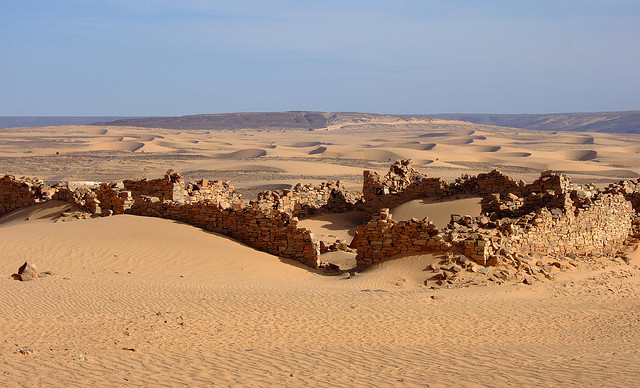
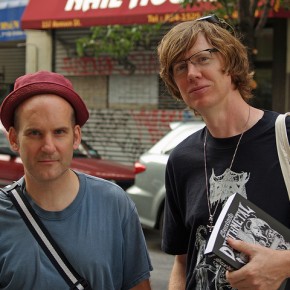
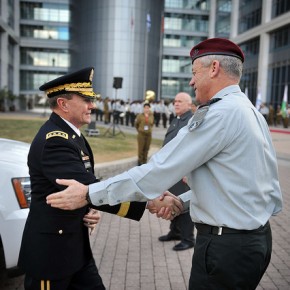
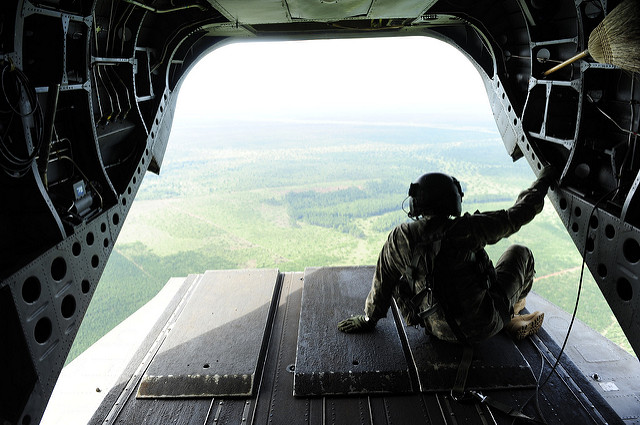

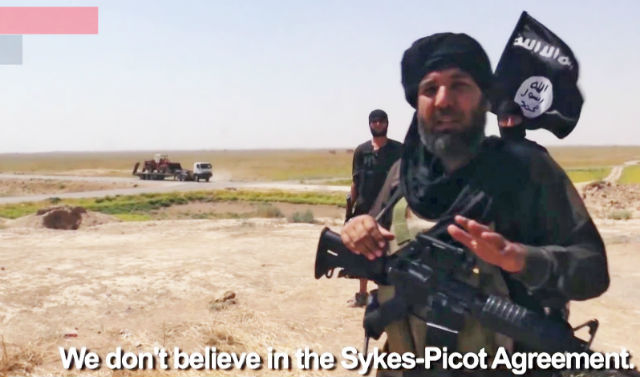
I am a big believer in looking at things holistically and find these results heartening. You’ve got me to thinking of how to encourage this approach in other areas of the world, other industries and fields. Thanks for sharing.